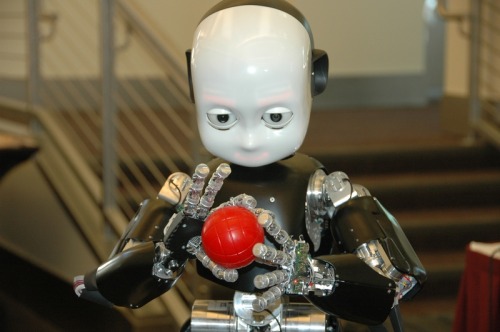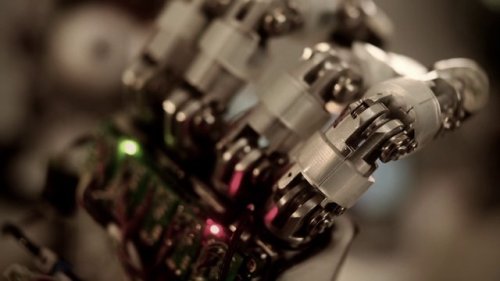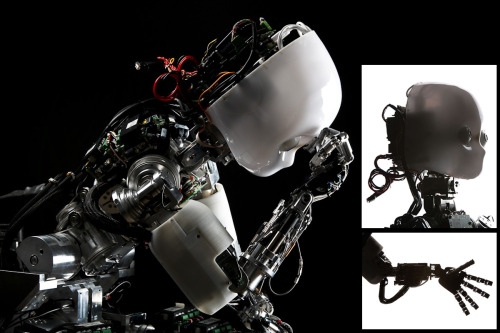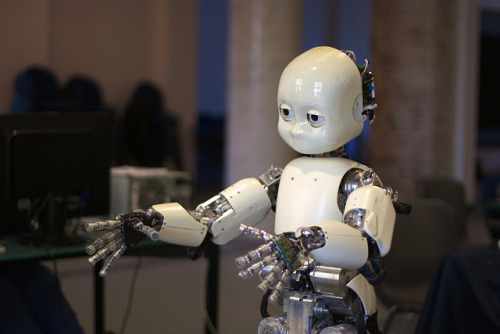
Not all would agree but I think this advancement in robotics could be a gigantic leap in the way artificial intelligence (A.I.) grows in future robots that will need some kind of advanced A.I. For instance, how do we suppose any sentient being with the capacity to learn..learns? Although it may not be the paramount function of robotics, communicating is definitely up there in the list of obstacles needed to be apprehended if we are to have competent robots making human interactions. For it is because of communication that we learn to pass on data, and language is a form of it.
Think of it this way, a robot that understands how language works and even knows how to use it, is a robot that has been given a new pathway to understanding. A pathway that we as humans have acquired and while we haven’t mastered it I believe we do have enough experience with it to imitate it and implement it in fields where it is most needed. What I really took from this article however is the fact that the researchers looked at how the brain actually works in order to mimic the way we form and understand language. This is how robotics ought to be looked at, we see our biological nature and mimic it to the best of our abilities using technology. Working with simpler versions while upgrading along the way.


"This technological prowess was made possible by the development of a “simplified artificial brain” that reproduces certain types of so-called “recurrent” connections observed in the human brain. The artificial brain system enables the robot to learn, and subsequently understand, new sentences containing a new grammatical structure. It can link two sentences together and even predict how a sentence will end before it is uttered. This research has been published in the journal PLoS One.So while we’re still years maybe decades away from normal social interactions with them, it seems like the way robots will interact with humans (and other functional benefits that come with understand and using language) just got a much needed boost in its progress. Can’t wait to see the evolution of their language come to fruition.
Inserm and CNRS researchers and the Université Lyon 1 have succeeded in developing an “artificial neuronal network” constructed on the basis of a fundamental principle of the workings of the human brain, namely its ability to learn a new language. The model was developed after years of research in the Inserm 846 Unit of the Institut de recherche sur les cellules souches et cerveau, through studying the structure of the human brain and understanding the mechanisms used for learning.
One of the most remarkable aspects of language-processing is the speed at which it is performed. For example, the human brain processes the first words of a sentence in real time and anticipates what follows, thus improving the speed with which humans process information. Still in real time, the brain continually revises its predictions through interaction between new information and a previously created context. The region inside the brain linking the frontal cortex and the striatum plays a crucial role in this process.
Based on this research, Peter Ford Dominey and his team have developed an “artificial brain” that uses a “neuronal construction” similar to that used by the human brain. Thanks to so-called recurrent construction (with connections that create locally recurring loops) this artificial brain system can understand new sentences having a new grammatical structure. It is capable of linking two sentences and can even predict the end of a sentence before it is provided. To put this advance into a real-life situation, the Inserm researchers incorporated this new brain into the iCub humanoid robot."
Source: ScienceDaily


No comments:
Post a Comment